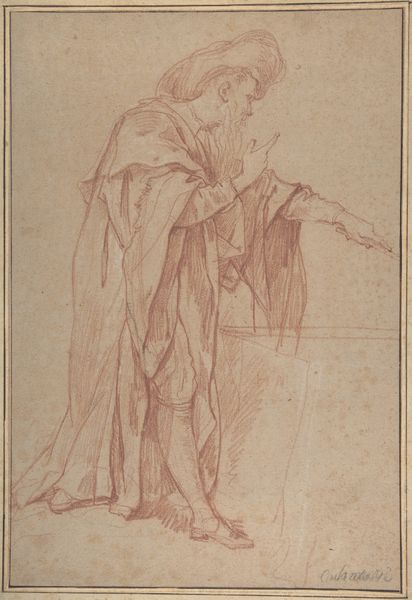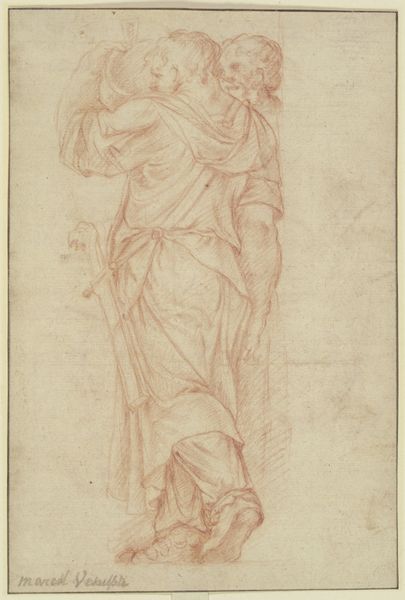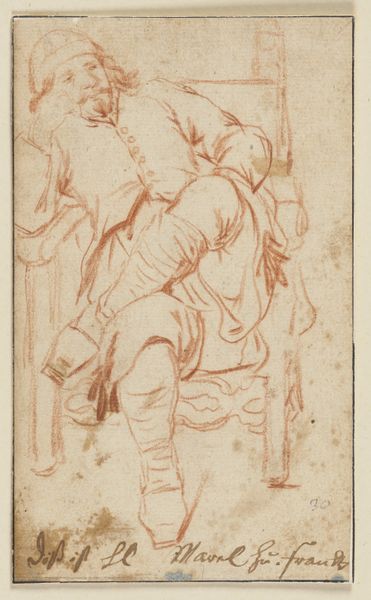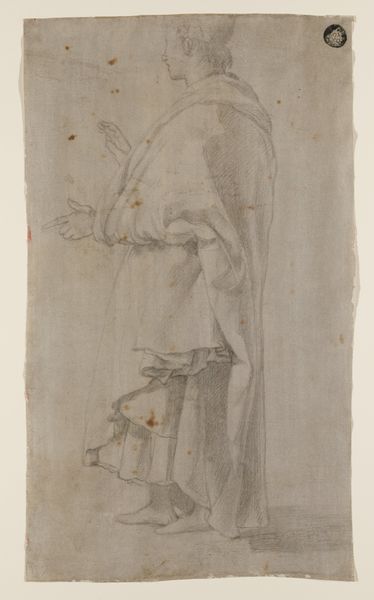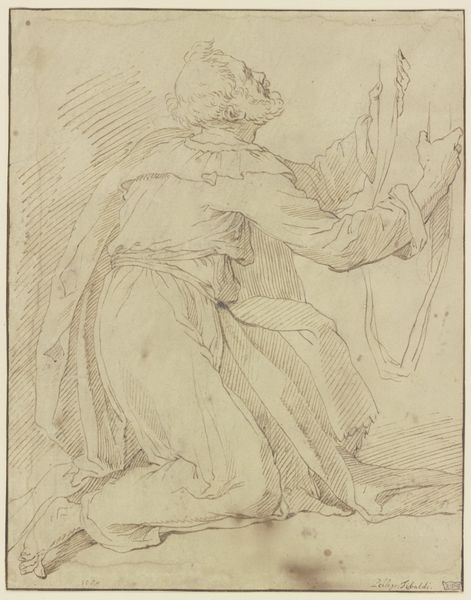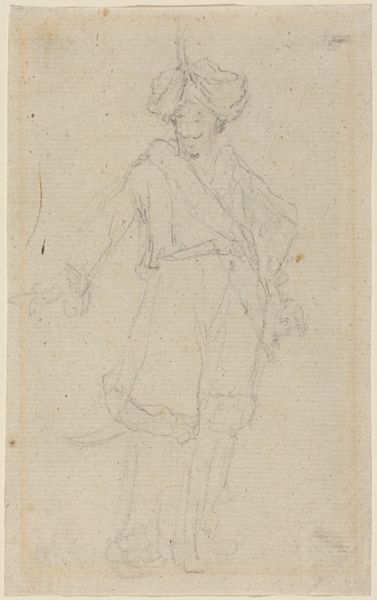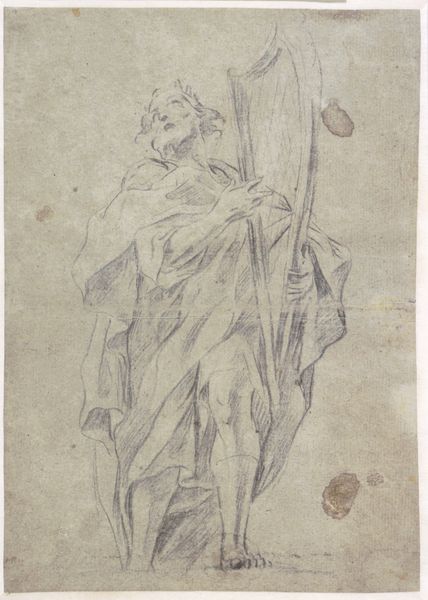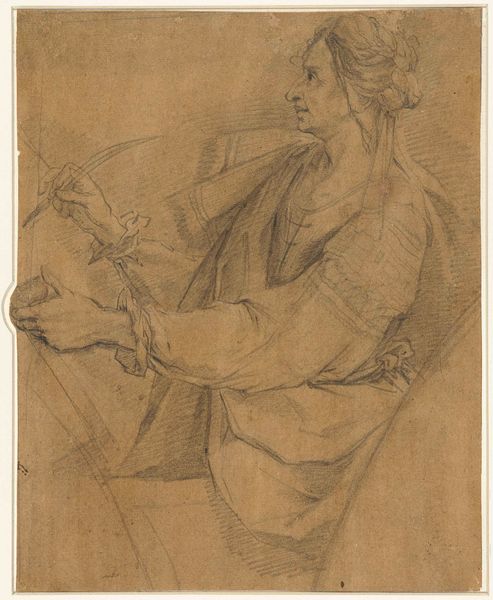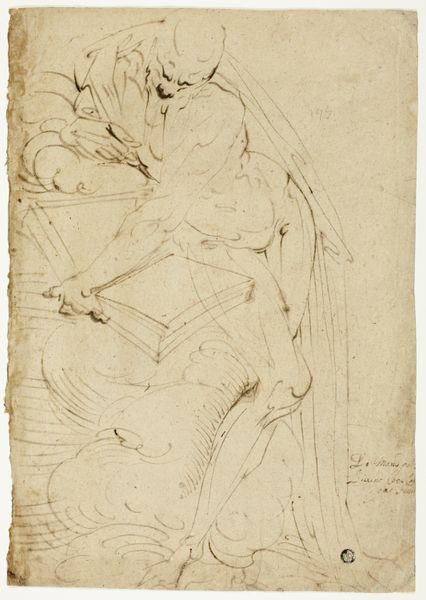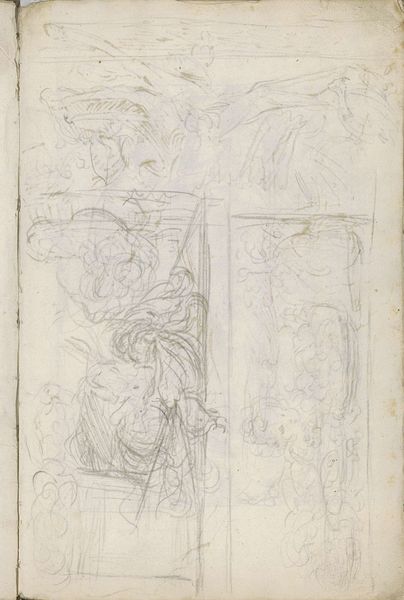
Seated Man with a Book and a Scroll 1400 - 1450
0:00
0:00
drawing, paper, ink
#
portrait
#
drawing
#
medieval
#
book
#
figuration
#
paper
#
ink
#
men
#
portrait drawing
#
history-painting
#
northern-renaissance
Dimensions: 11 9/16 x 6 15/16 in. (29.3 x 17.6 cm)
Copyright: Public Domain
Curator: Look at the detail in this drawing. Stefano da Verona created "Seated Man with a Book and a Scroll" sometime between 1400 and 1450. It’s rendered in ink on paper. What are your first thoughts? Editor: Austere. The sepia tones and delicate lines evoke a feeling of quiet scholarship, of a world defined by religious scholarship and moralizing allegories. The texture of the paper really adds to that antique feel. Curator: Right. We can think about the social context. Medieval drawings like this one weren't widely accessible to the public. Consider that the materials like fine paper and ink would have been luxury goods, indicative of patronage from wealthy or religious institutions. Who would have consumed art like this, and in what setting? Editor: The figure's garb and the presence of religious texts indicate someone of significance, a church authority perhaps, but the drawing’s existence speaks volumes about the artist's patron—someone who valued literacy, learning, and the church itself. Curator: I find myself drawn to Stefano's technique. Notice the careful hatching used to define the drapery and the subtle shading to suggest form. The book and the scroll… these aren't just props. How does Stefano use the visual language of books and scrolls to construct social or personal status? Editor: Good point. Literacy at this time was tied to power and prestige, so the very act of depicting the man with these items reinforces his elevated position. Moreover, the text on the scroll, though difficult to decipher, surely carries some political and theological significance. Curator: Exactly. What about the institutional history of drawings? As works on paper they're more fragile and portable, were often kept in private collections rather than displayed publicly. And their creation speaks of a very particular studio process. What are your thoughts? Editor: True. Think about how the act of displaying the drawing impacts our view. From a purely historical perspective, pieces like this offer invaluable insights into how elites chose to portray themselves. How art legitimized religious and secular control of life. Curator: This piece, even in its modest scale and form, invites us to think about the labor, social dynamics, religious, and the historical impact of knowledge during the early Renaissance. Editor: Indeed. And in this digital age, viewing an artwork created by hand on such simple, elegant materials evokes a kind of reverence for past and bygone creative approaches.
Comments
No comments
Be the first to comment and join the conversation on the ultimate creative platform.
